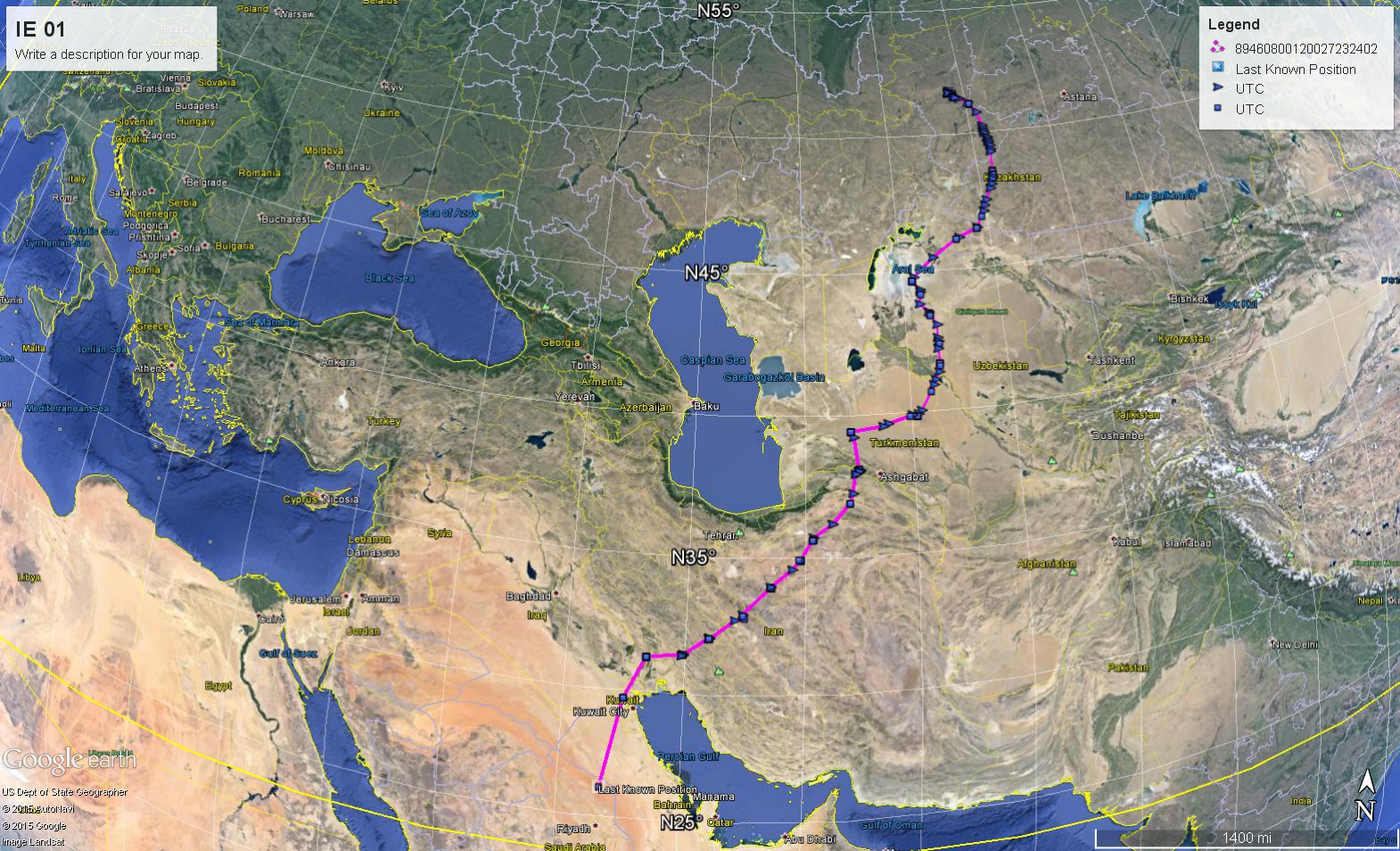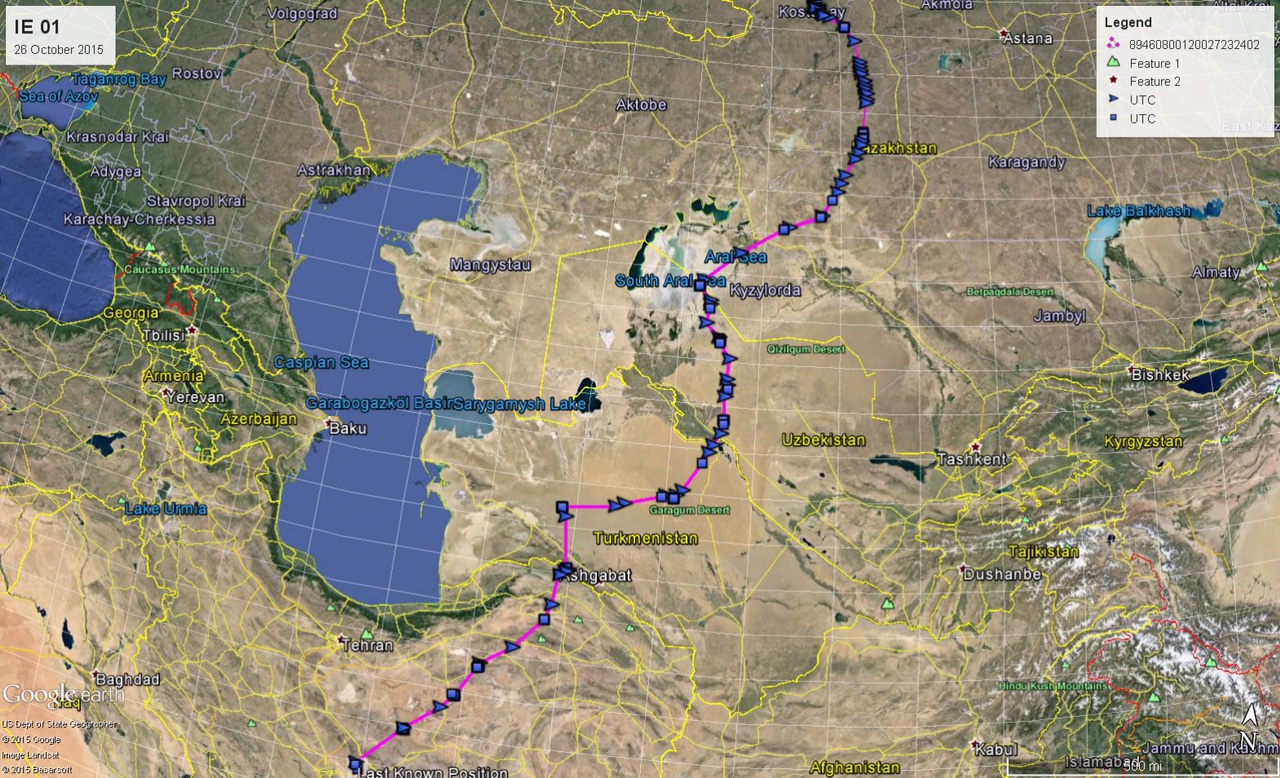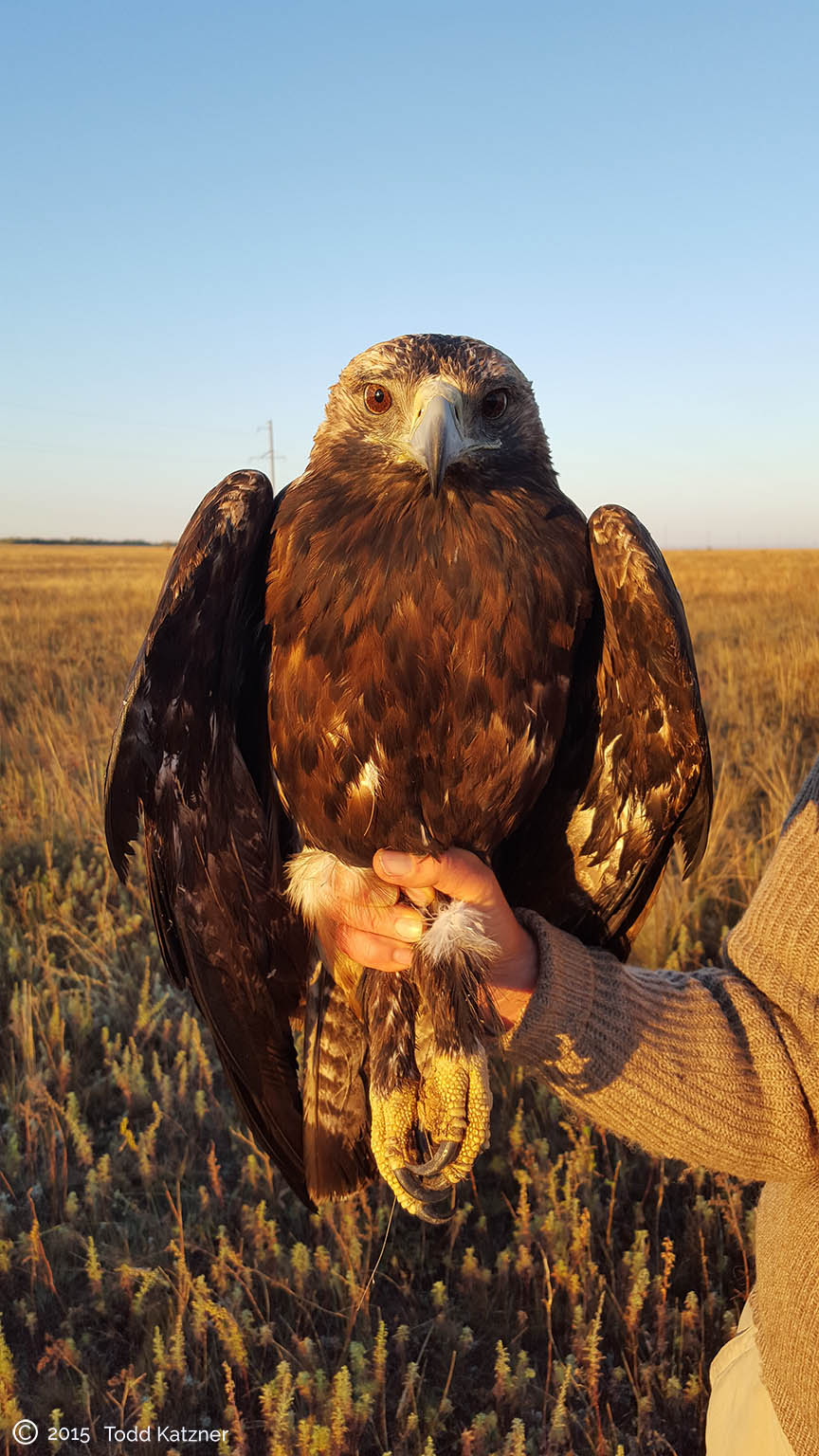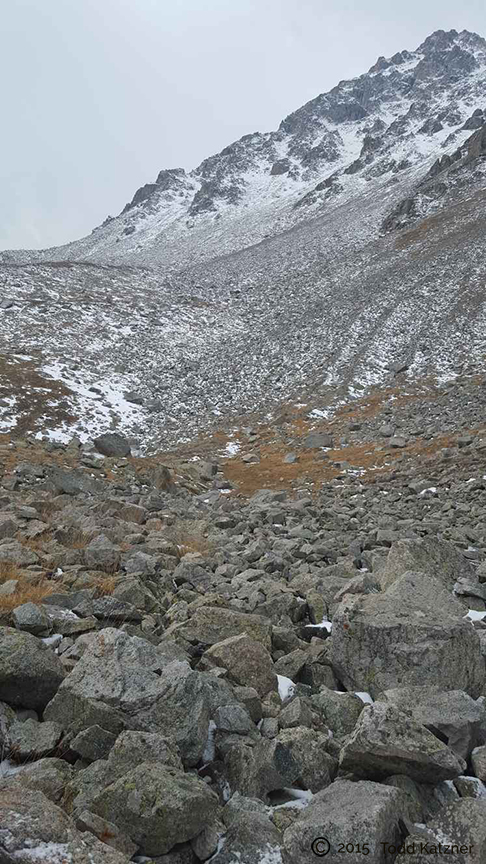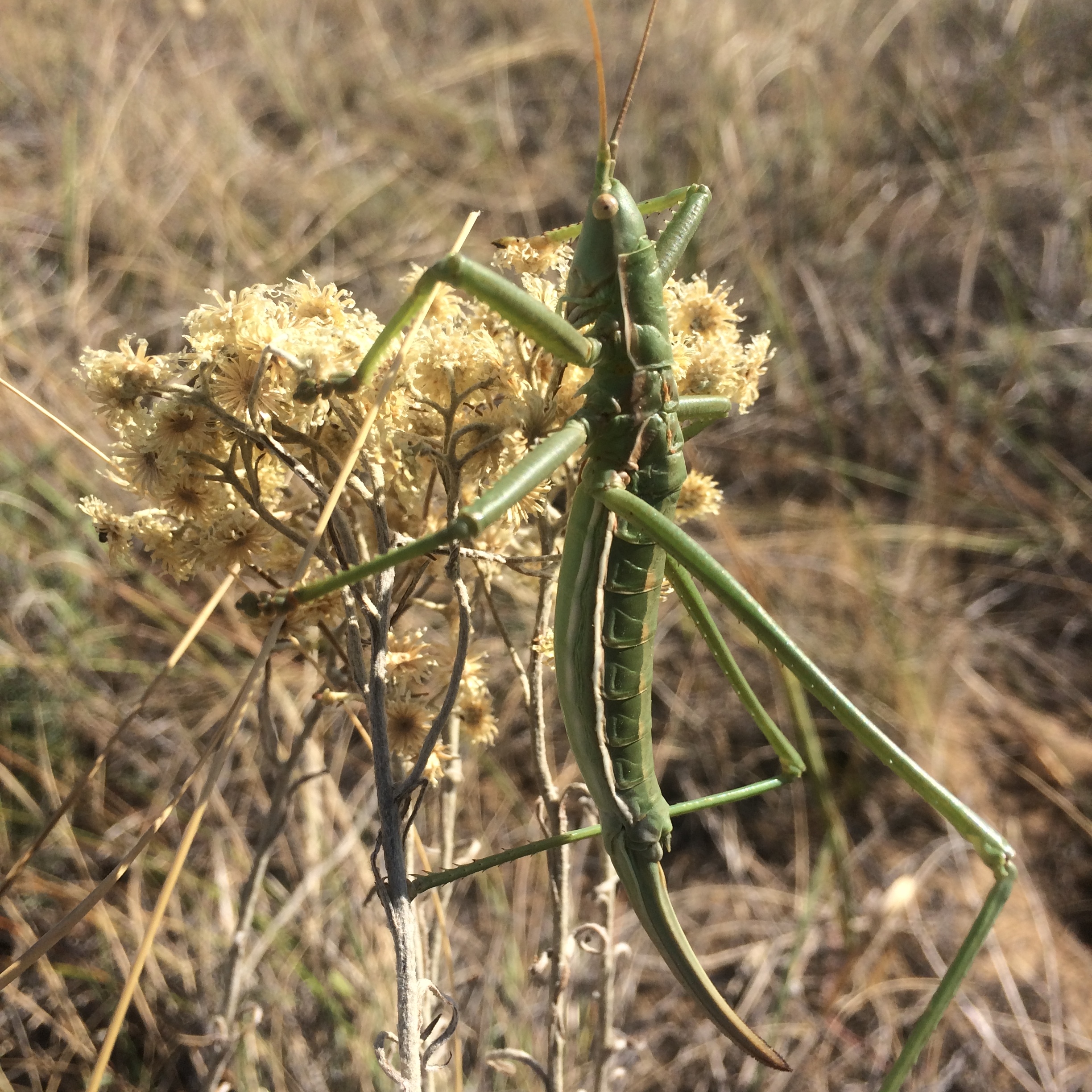Pete Bloom with the southern CA chapter of the Wildlife Society in Orange County June, 2017
NABC banding training, September 2016
This September at the Intermountain Bird Observatory (IBO) - Lucky Peak Field Station in Boise Idaho, the North American Banding Council (NABC) conducted a 3 day training course to certify IBO staff and local affiliates in proper raptor banding techniques. With instruction by BRI's Peter Bloom and raptor banding trainer Greg Kaltenecker (IBO), students completed a written test, studied museum specimens and live captive raptors and worked in the field for 2-3 days with IBO's autumn raptor migration program. The course was observed by Anthony Hill (NABC).
An update on Banning Ranch
On Wednesday, September 7, the California coastal commissioners rejected the development proposal for Banning Ranch due in part to BRI's Pete Bloom's testimony on the Burrowing Owl and its habitat requirements. We are so excited that the council voted 9-1 this way and are hopeful for the future.
Burrowing Owls and Newport Banning Ranch development
The Newport Banning Ranch project is one of the largest residential developments proposed in Orange County in a number of years. This week the Coastal Commission staff recommended increasing the amount of acreage needed for conservation thanks in part to a letter submitted by BRI's Peter Bloom advocating for more land to be devoted to the Burrowing Owl's wintering habitat. (a state species of special concern ) A good week for conservation!
Raptor Research Foundation conference Nov. 4-8
We are pleased that this coming weekend, the Raptor Research Foundation is hosting its annual conference in Sacramento. BRI's Dr. Peter Bloom will be the plenary speaker discussing “Fifty Years of California Raptor Conservation — Success, Failure, Works in Progress, & Insights for Future Research.”
Links to information about the conference and the Raprotr Research Foundation can be found here
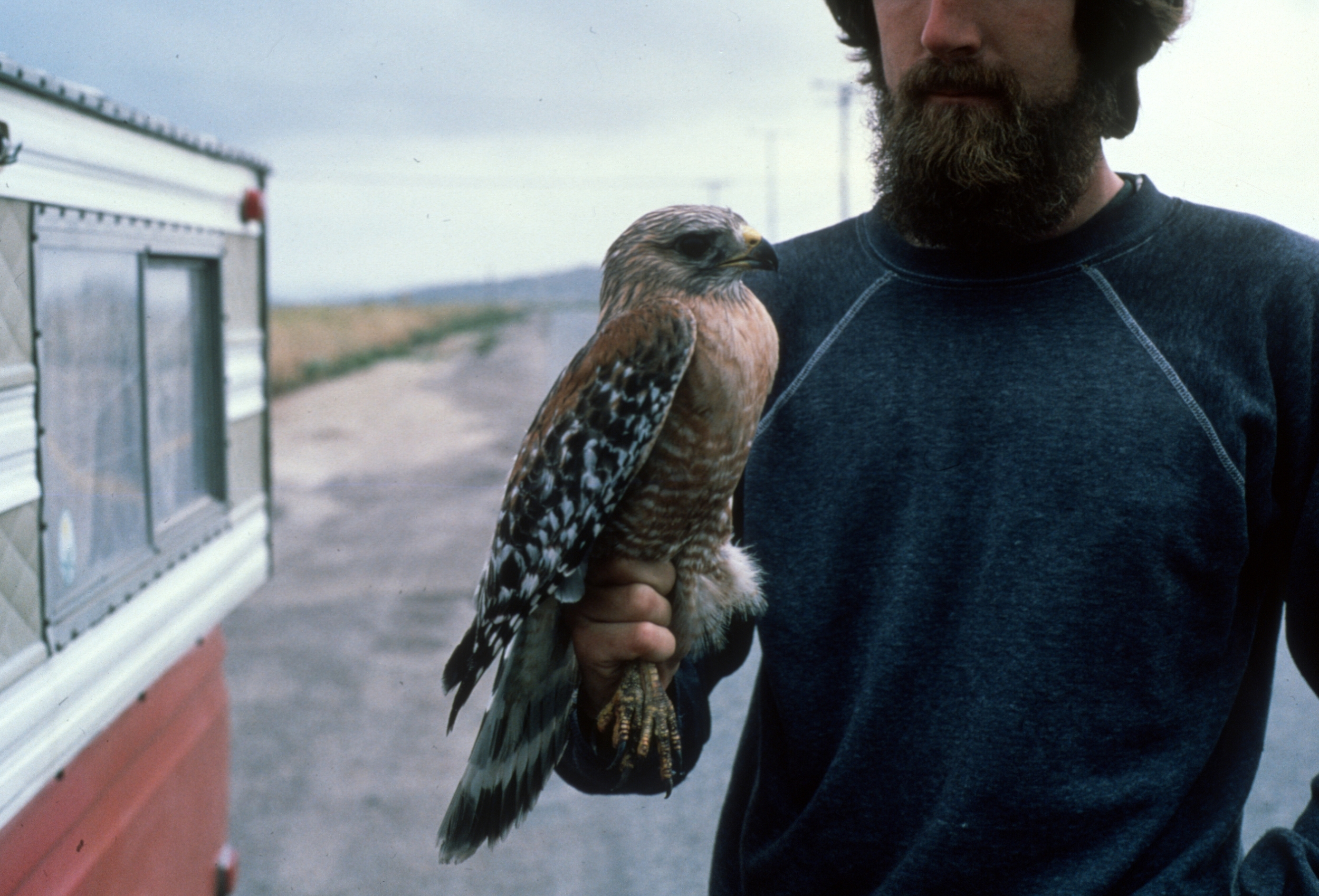
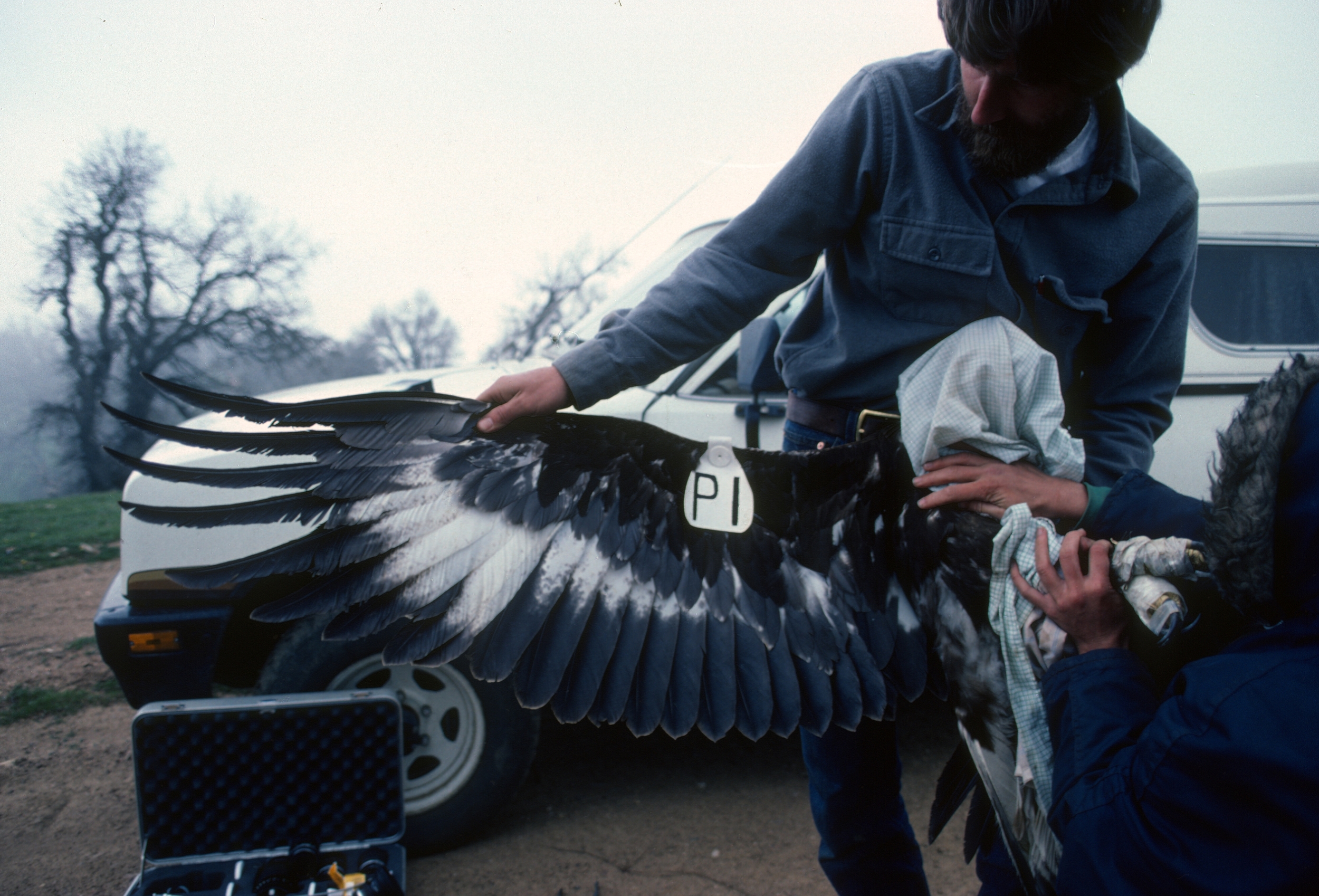
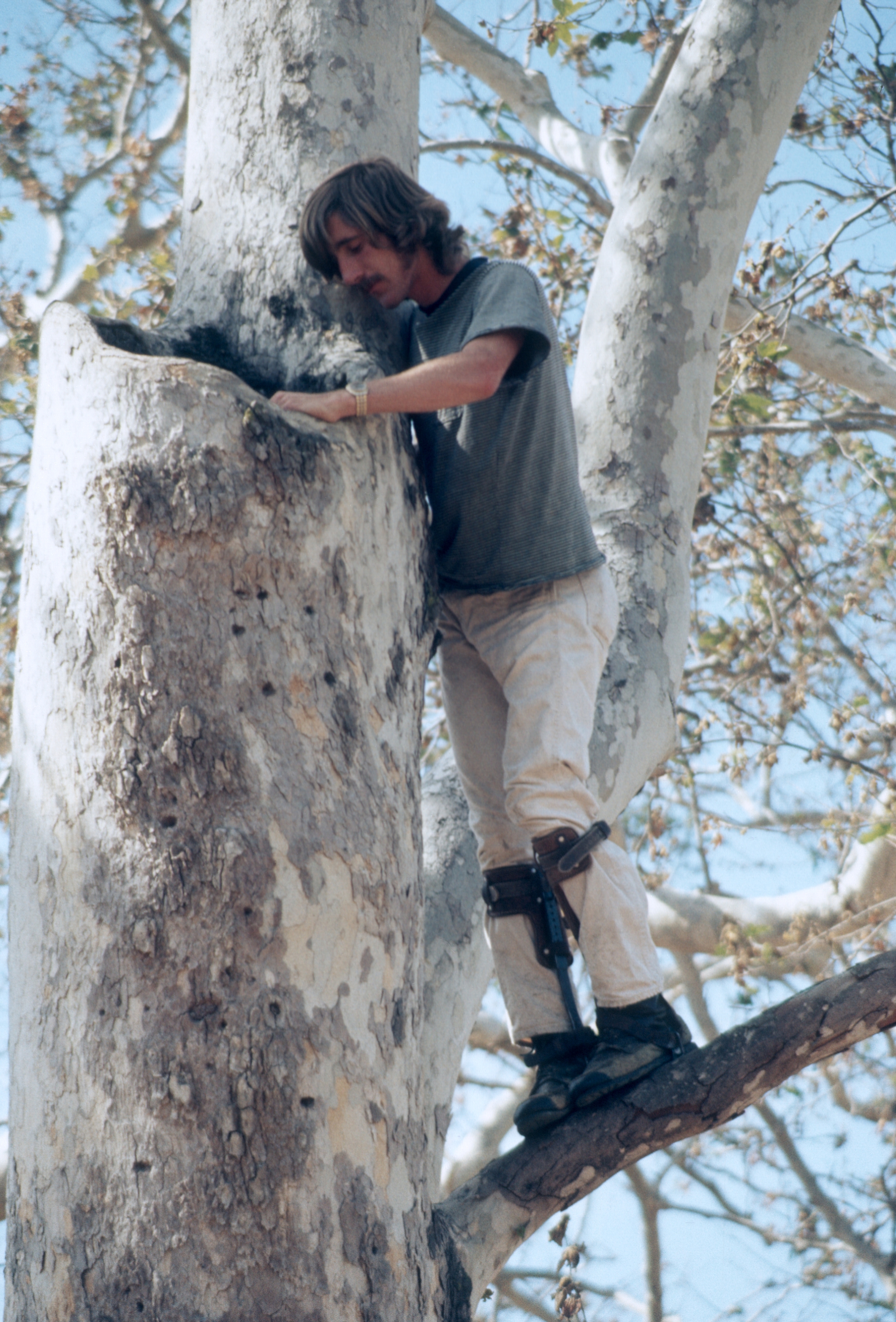
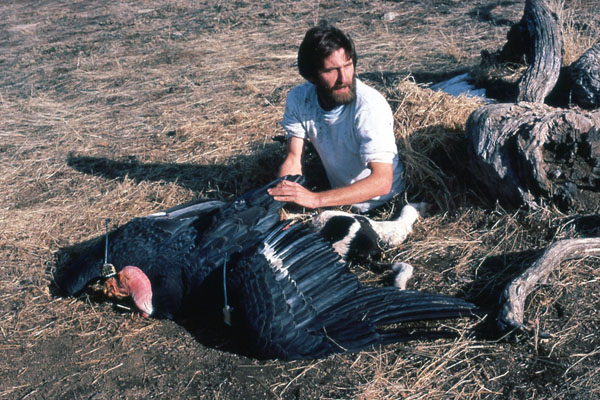
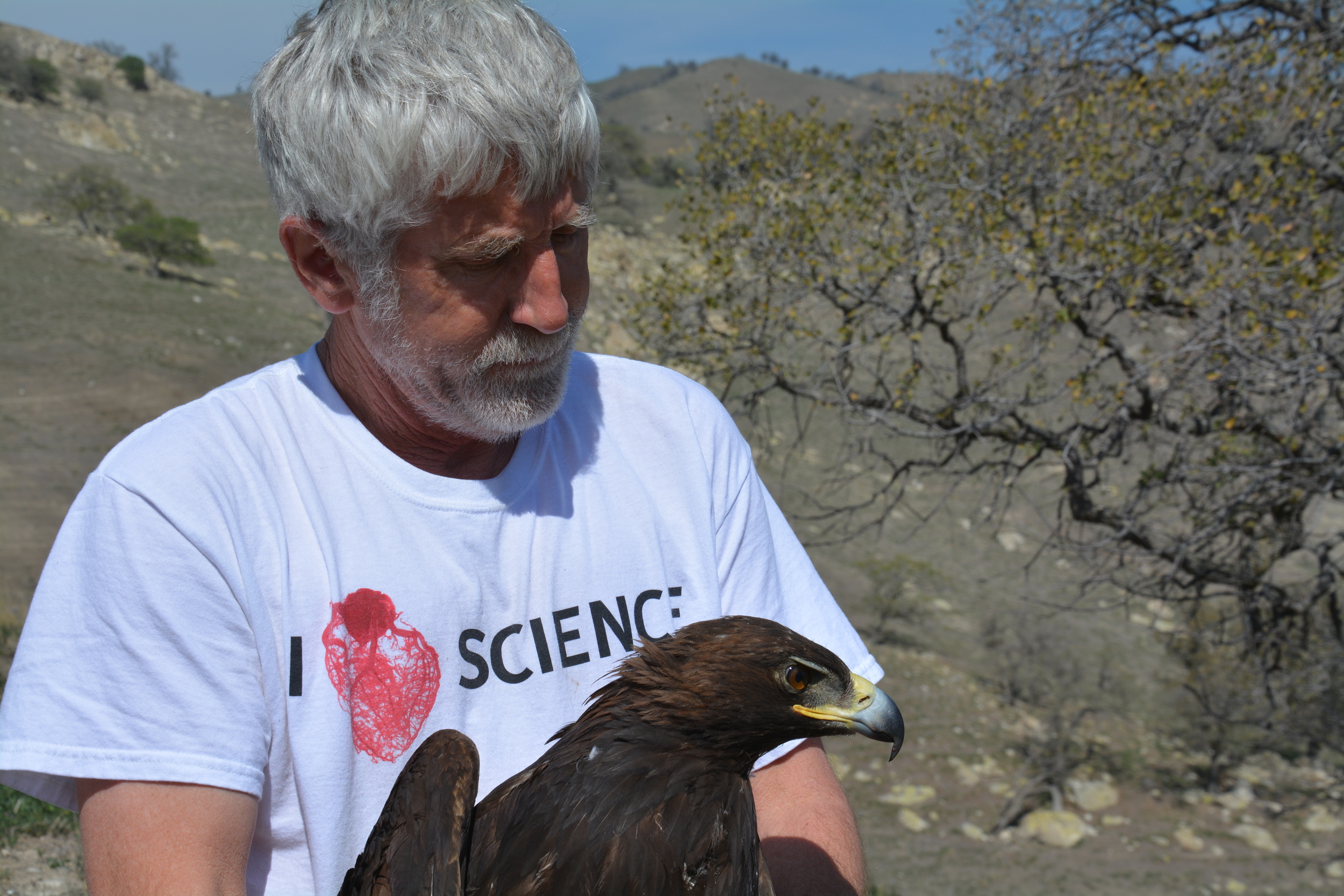
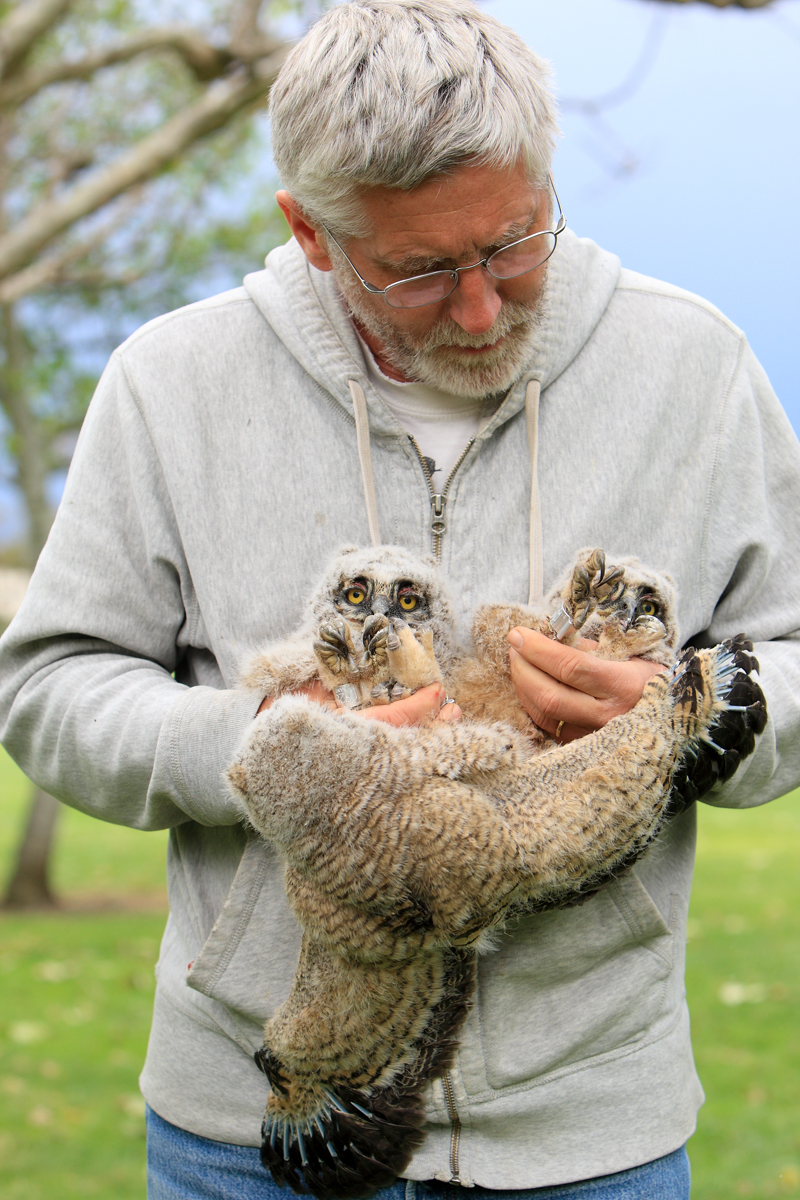

Imperial eagle migration updated
The Imperial eagle that was banded Sep 23, 2015 in Kazakhstan by Dr. Evgeny Bragin and Dr. Todd Katzner with assistance from Dr. Peter Bloom is on the move. This post is dedicated solely to the data received about his migration path. To read more about the entire project, please read the previous blog entry.
As of November 07, 2015, the eagle continues its migration flying south putting it near Sulayii in Saudi Arabia, having passed through northern Iran, Uzbekistan and Turkmenistan. From the data received from the GPS-GSM radio transmitter, he keeps getting blown slightly off course and then recovering seemingly due to the thermal winds from the west and the topography. Below that you will find maps courtesy of Dr. Todd Katzner tracking the eagle's movement.
November 3-16, 2015
Imperial Eagle | Kazakhstan
Dr. Evgeny Bragin releasing the eagle Sep 23, 2015
Dr. Evgeny Bragin with the Naurzum Zapovednik preserve, Kostanay State Pedagogical Institute and The Peregrine Fund, and Dr. Todd Katzner with the U.S. Geological Survey, in collaboration with The Peregrine Fund, have been working on a research project involving the ecology of raptors at the (Naurzum National Nature Reserve) in the Kostanay Oblast of north-central Kazakhstan (51°N, 64°E). Initiated by Dr. Bragin 40 years ago, and joined by Todd Katzner 20 years ago, they needed to capture an adult Eastern Imperial Eagle (Aquila heliaca), so BRI's Dr. Peter Bloom volunteered to assist them in the trapping effort. On September 23, 2015 they successfully captured, banded, and affixed a GPS-GSM radio transmitter to an adult male Imperial Eagle. The intent is to study the migratory movements of an eagle from its nesting territory at the north end of its range all the way to its wintering grounds, and perhaps also gain data on the use of its home range upon its return to Naurzum.
Dr. Bragin and Katzner have been studying eagles in this region for decades. Some of their research efforts have been published and include studies involving variation in the offspring sex ratio of a long lived sexually dimorphic raptor, the Imperial Eagle; conservation implications of inaccurate estimations of cryptic population size using populations of White Tailed sea eagles (Haliaeetus albicilla), Imperial eagle, Steppe (A.nipalensis) and Golden eagles (A.chrysaetos); and using naturally shed feathers to determine genetic parentage analysis, and population monitoring of the Imperial Eagle. For more information on the studies click below.



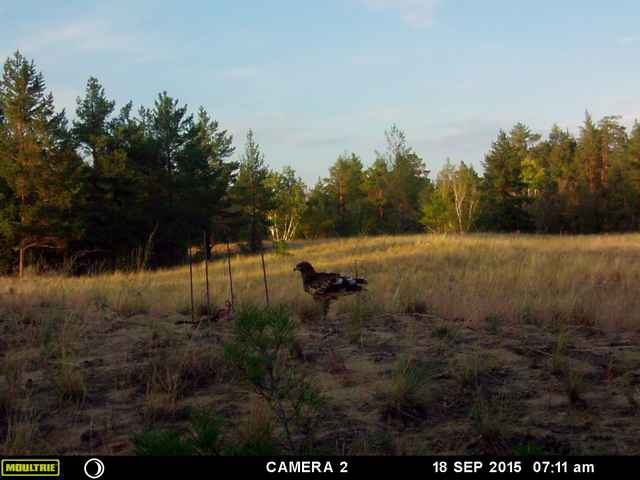

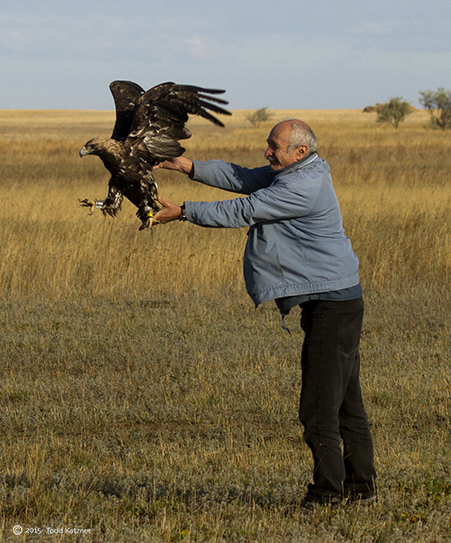

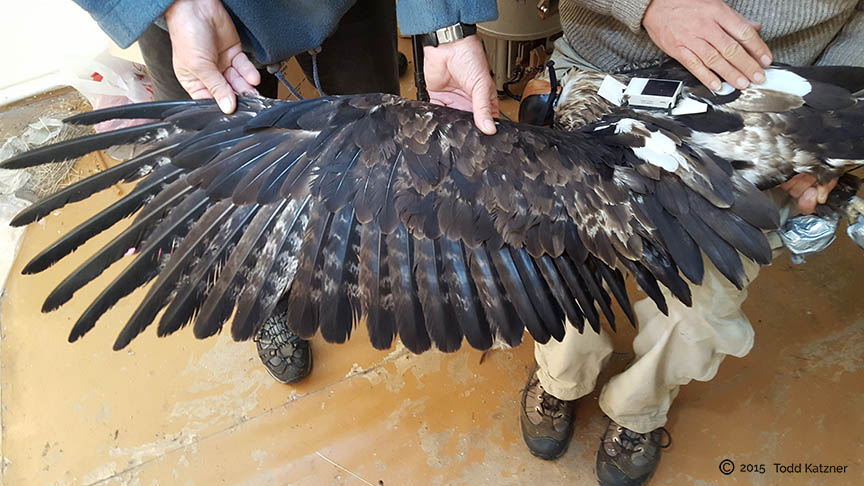
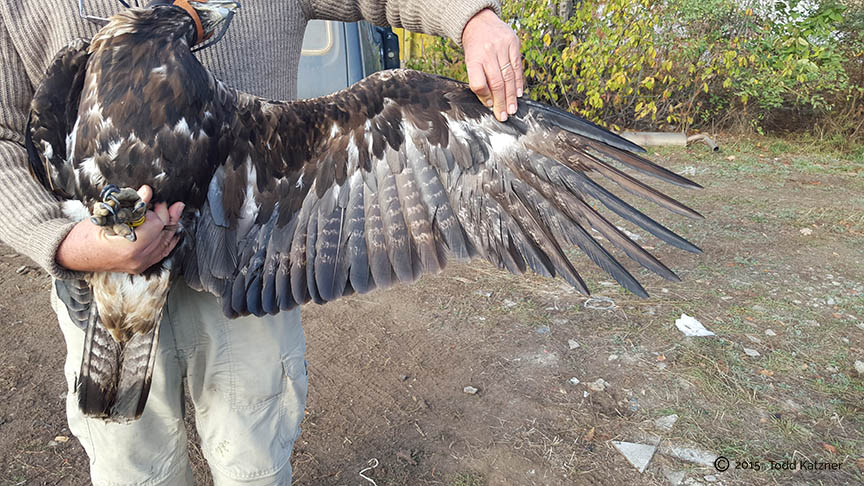





The Naurzum National Nature Reserve was pristine and full of amazing fauna and flora. In addition to the eagles, the preserve is home to a wide range of species including Saker Falcons, jerboas, European badgers, and the occasional moose. There are Prehistoric yurt circles in the soil and five species of Stipa blowing in the wind across the Central Asia steppe, mixed with groves of Scot's Pines. In addition to the preserve, on the last day of the trip they visited the Ili Alatauski National Park in the Tien Shan Mountains.






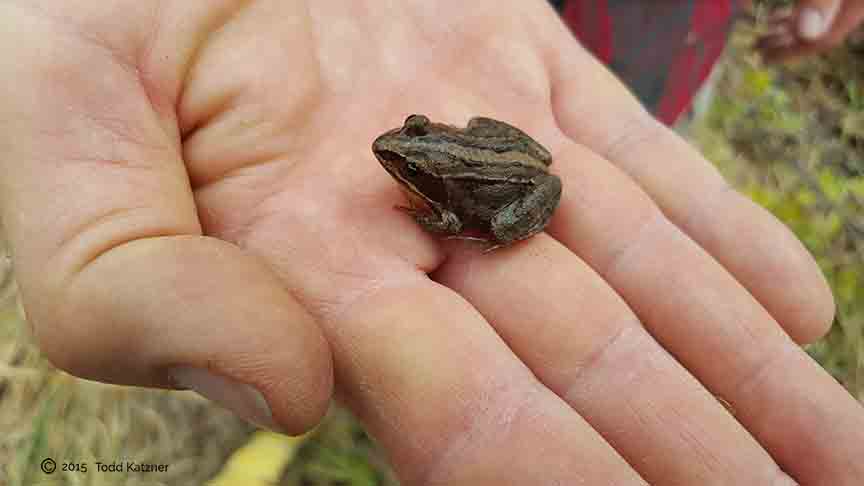






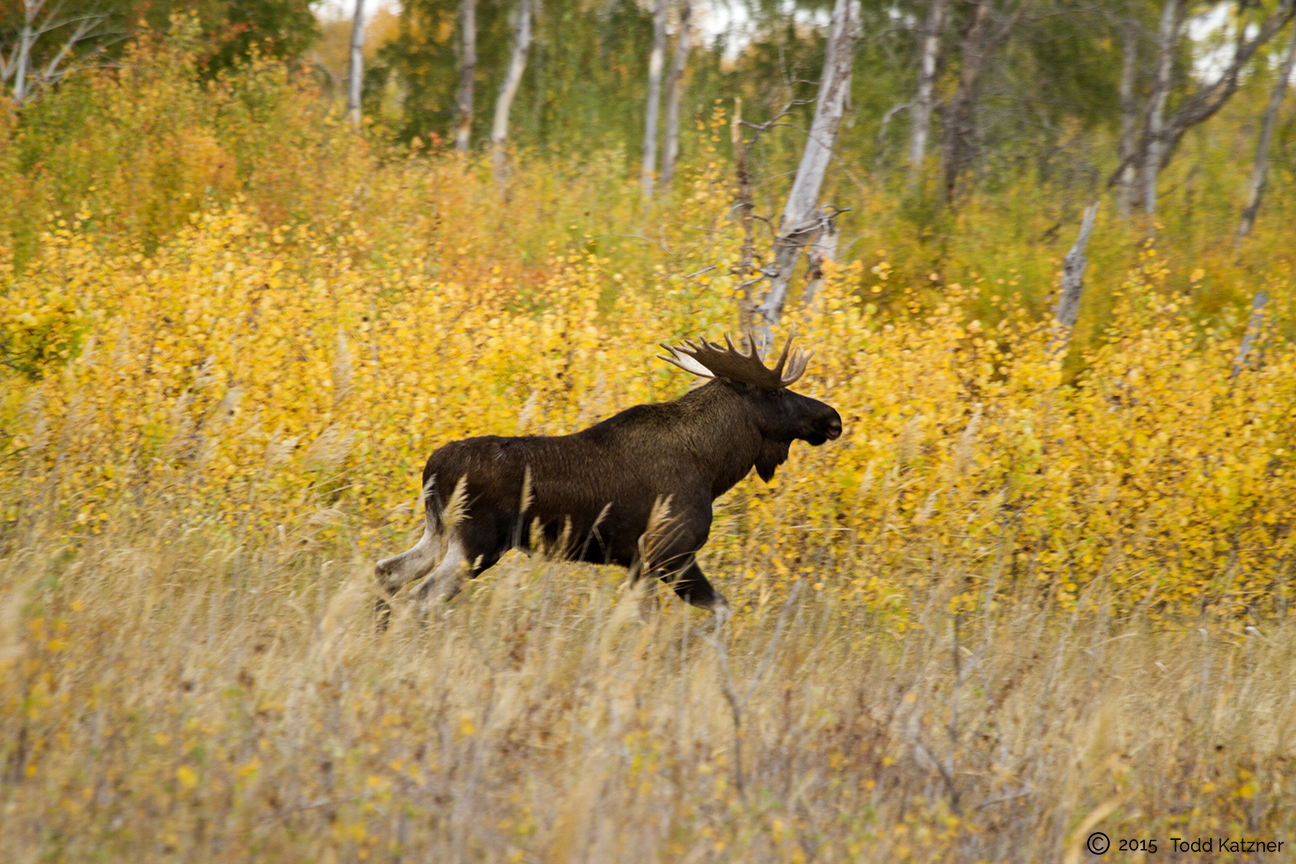
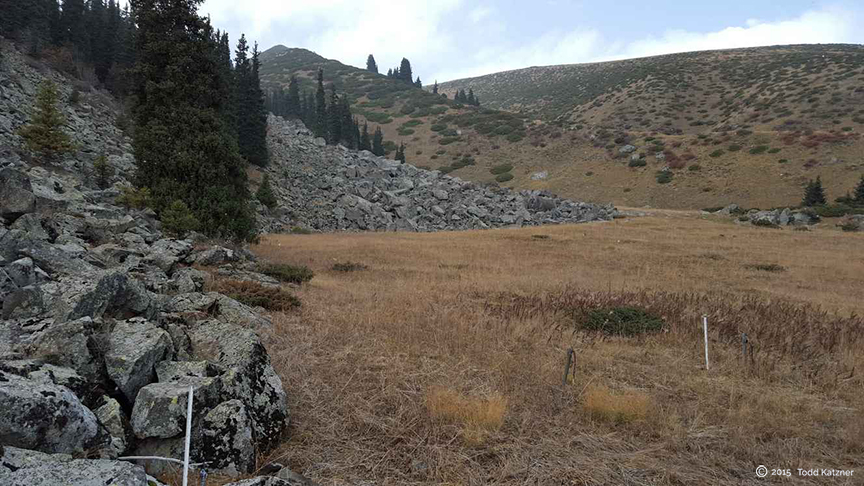


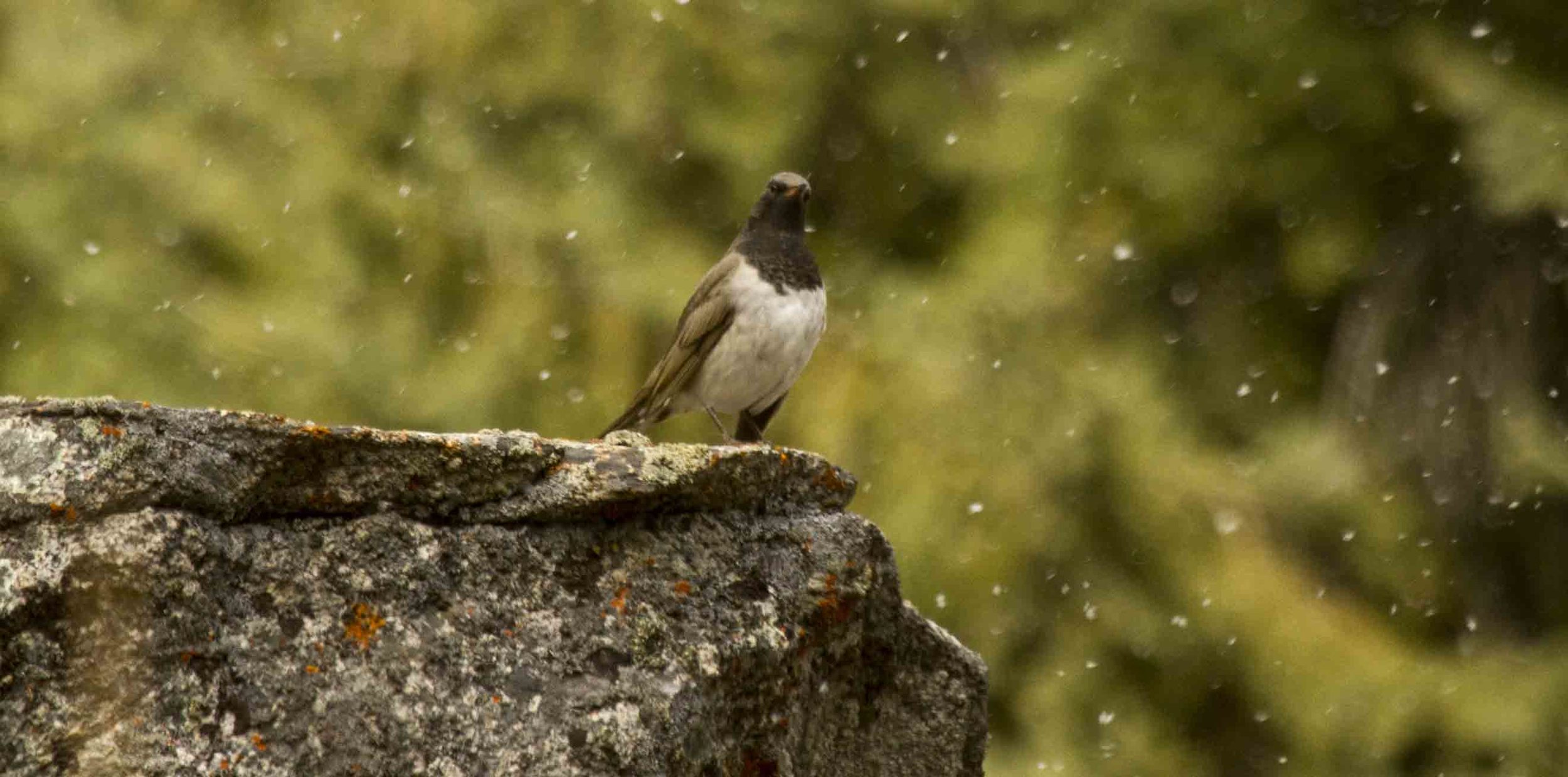
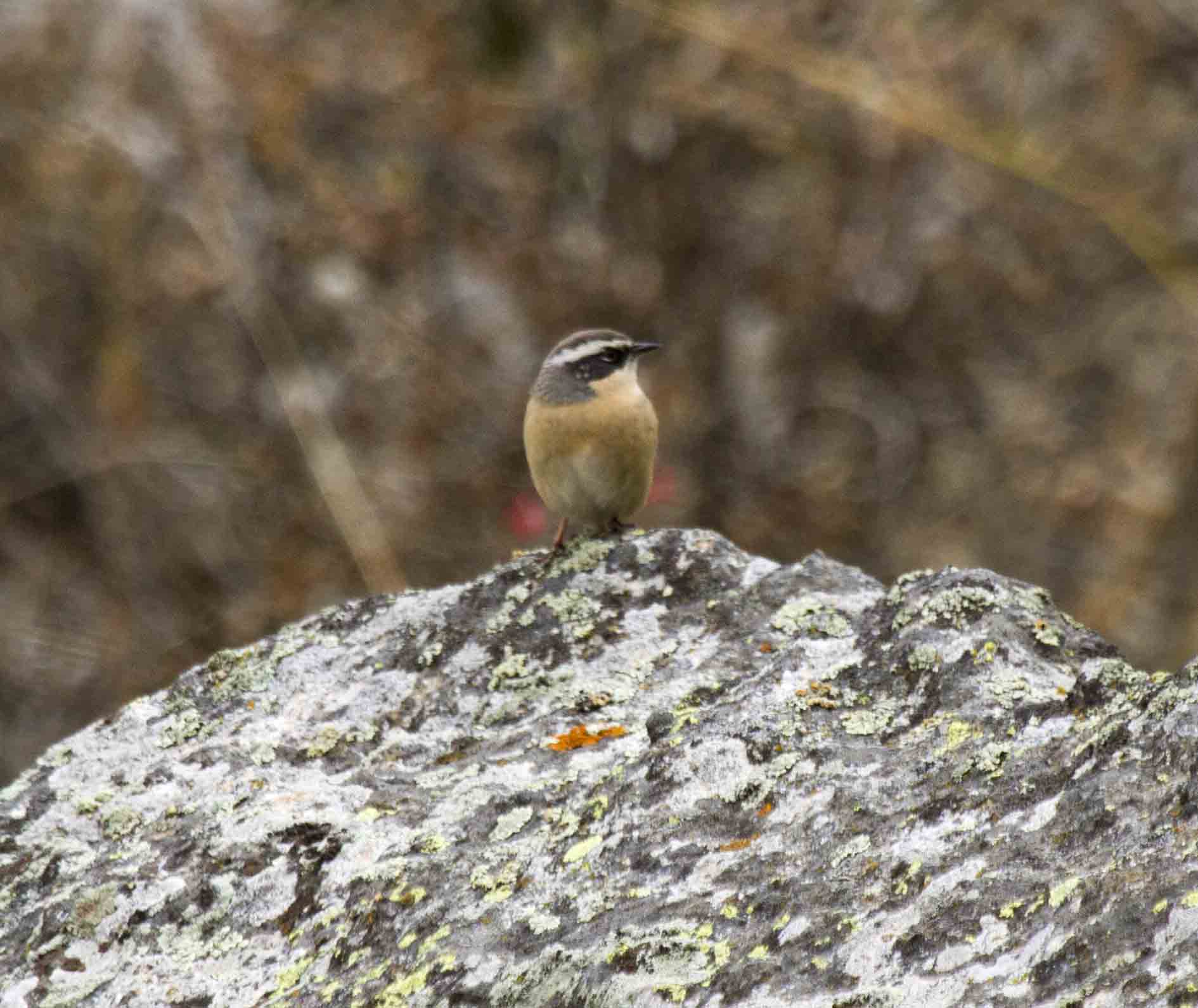
Imperial eagle banding in Kazakhstan
Pete Bloom is spending the next 10 days helping researchers in the Kostanay region of Kazakhstan trap and attach GSM (satellite) transmitters to two Imperial eagles. Here are some pictures of the area in which the eagles are located. We will keep posting updates, please check back!
Peter stumbled across this threatened grassland Praying Mantis, a female ovipositor with eggs.
Color banding Burrowing Owls - west end of the Antelope Valley.
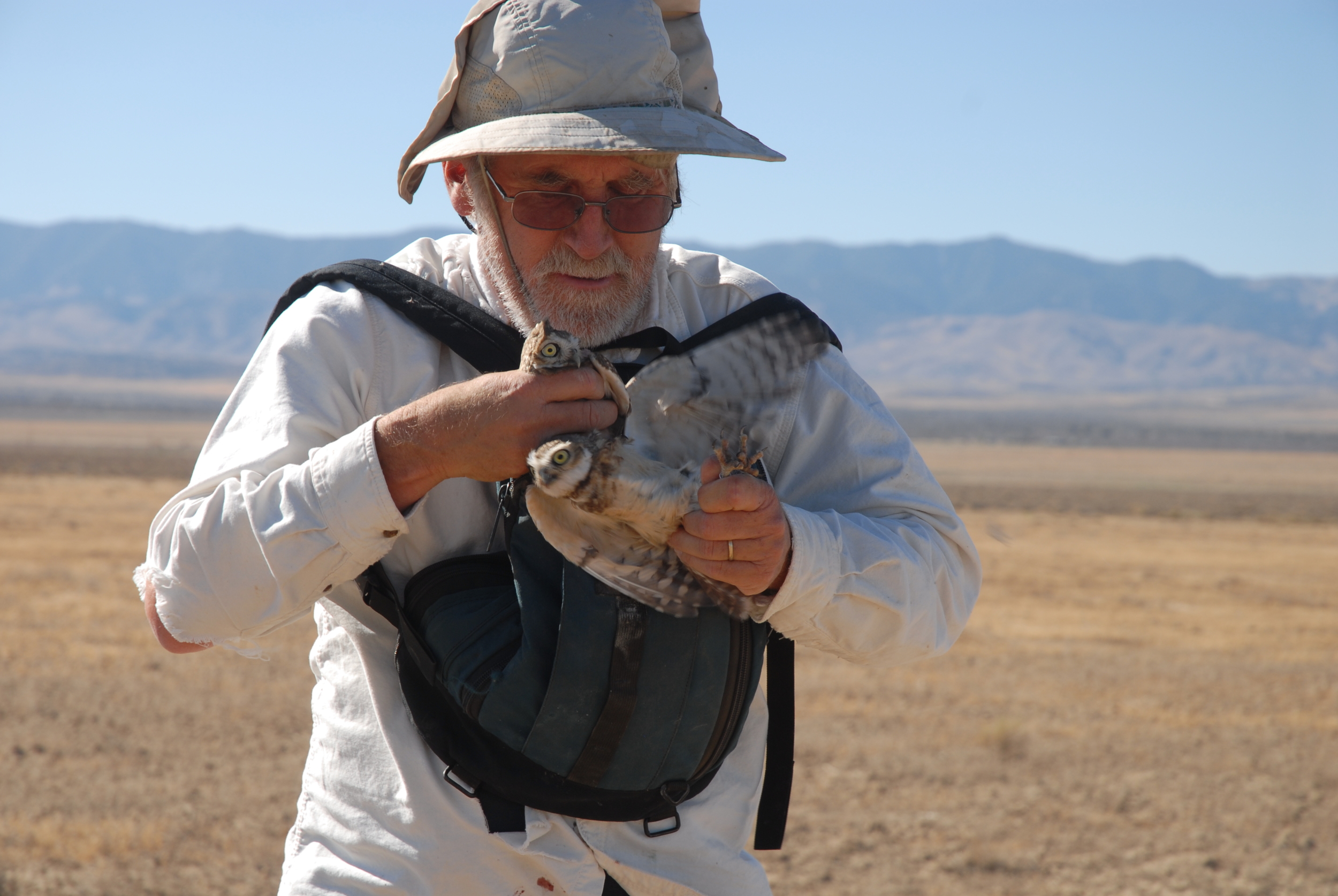
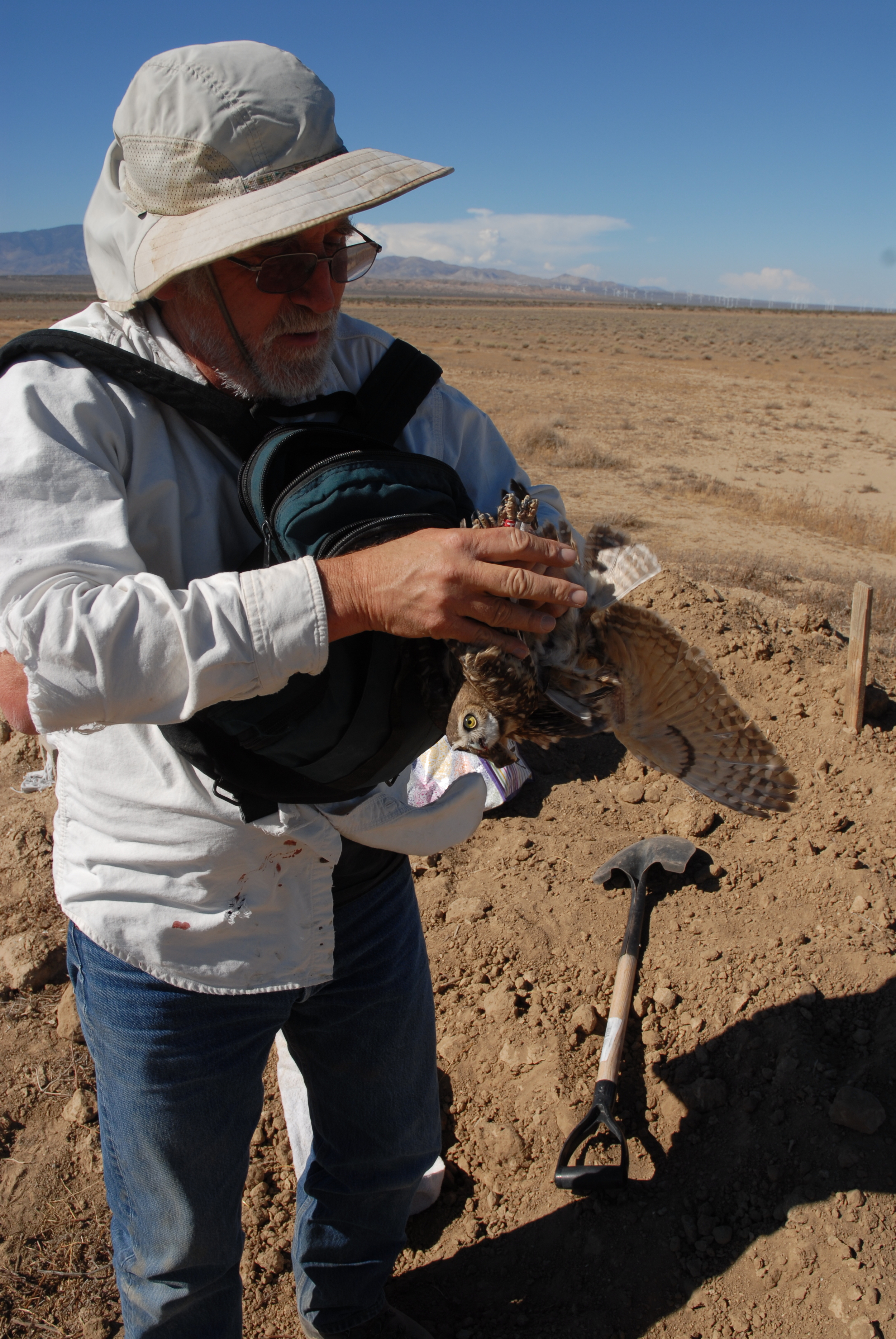
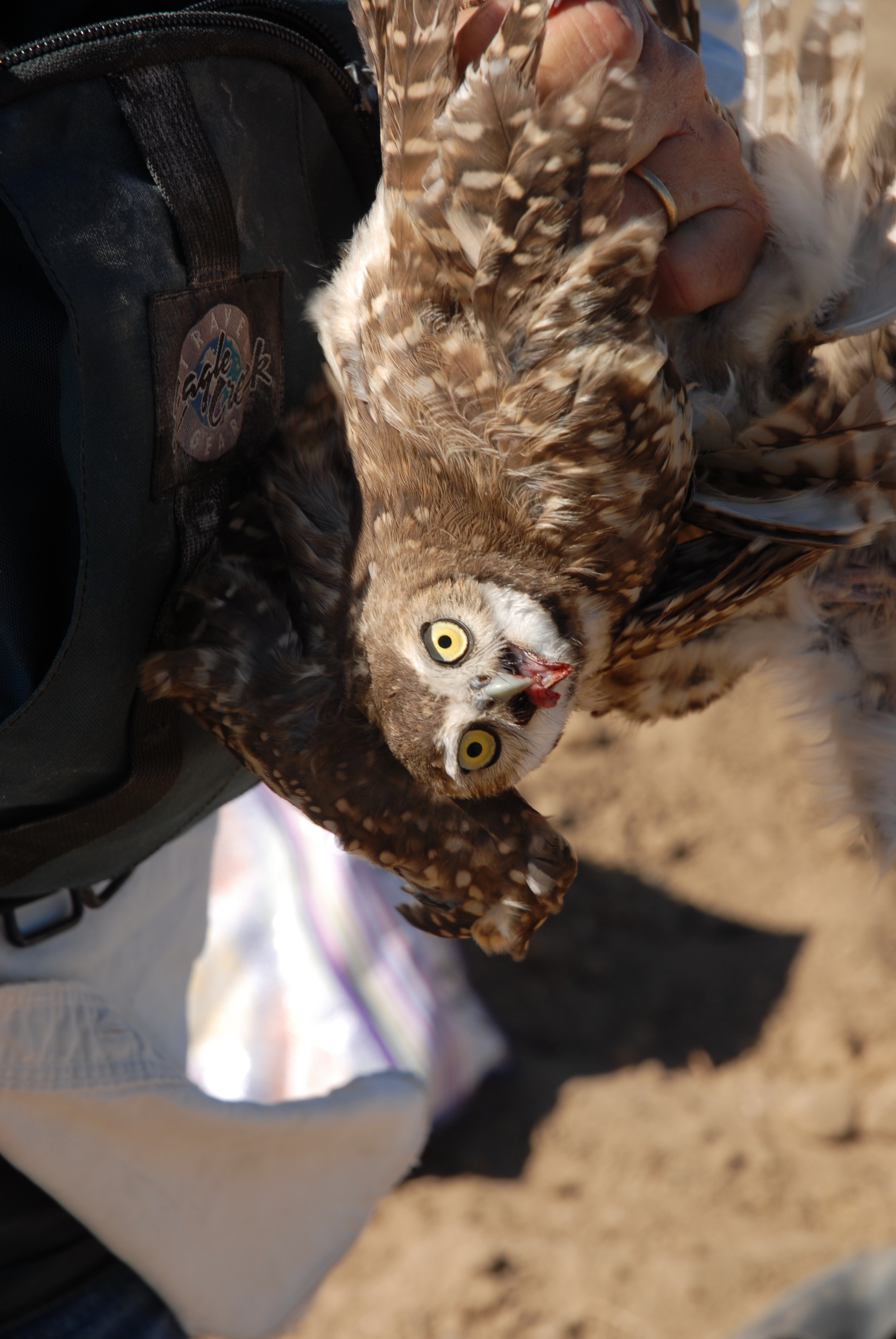
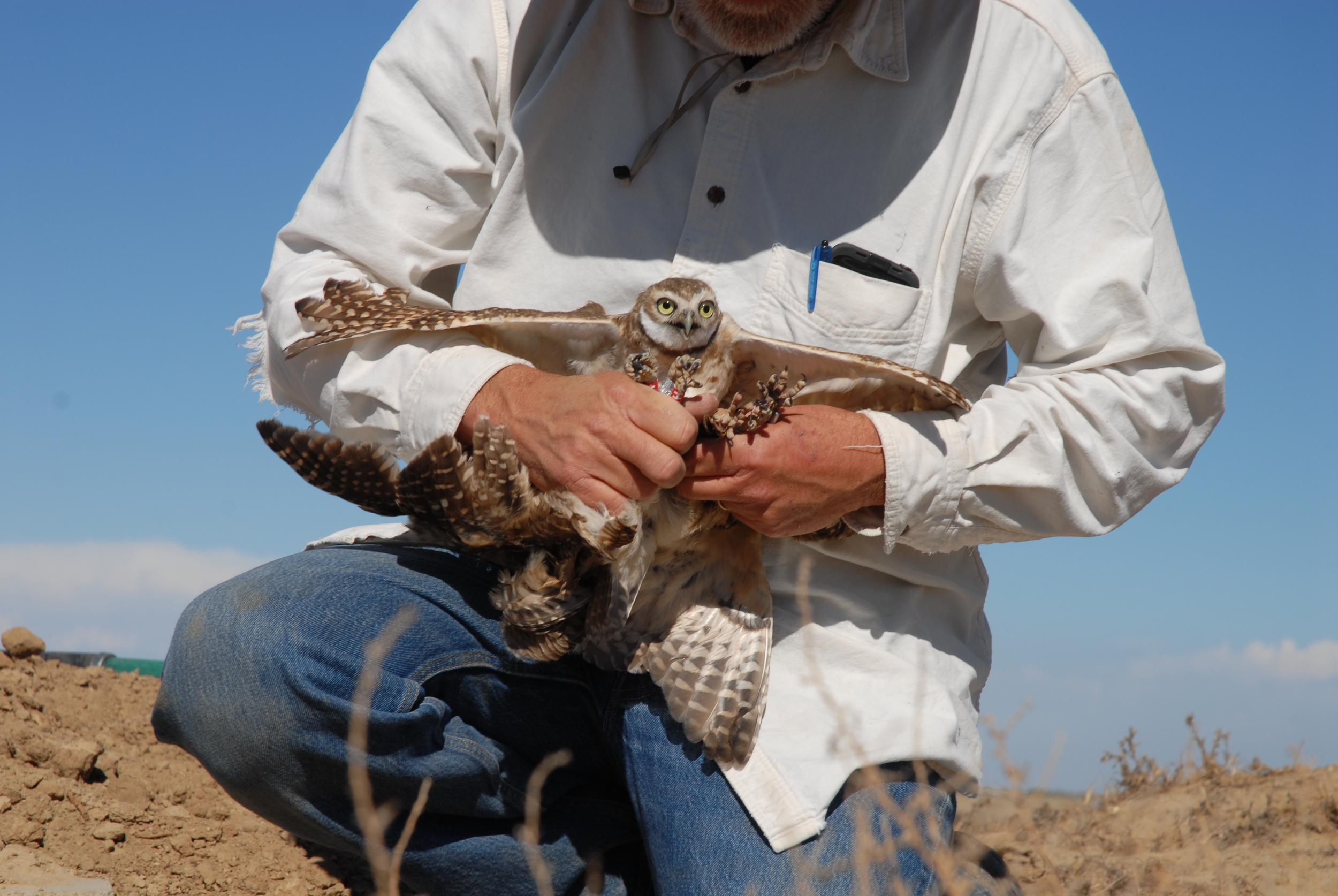
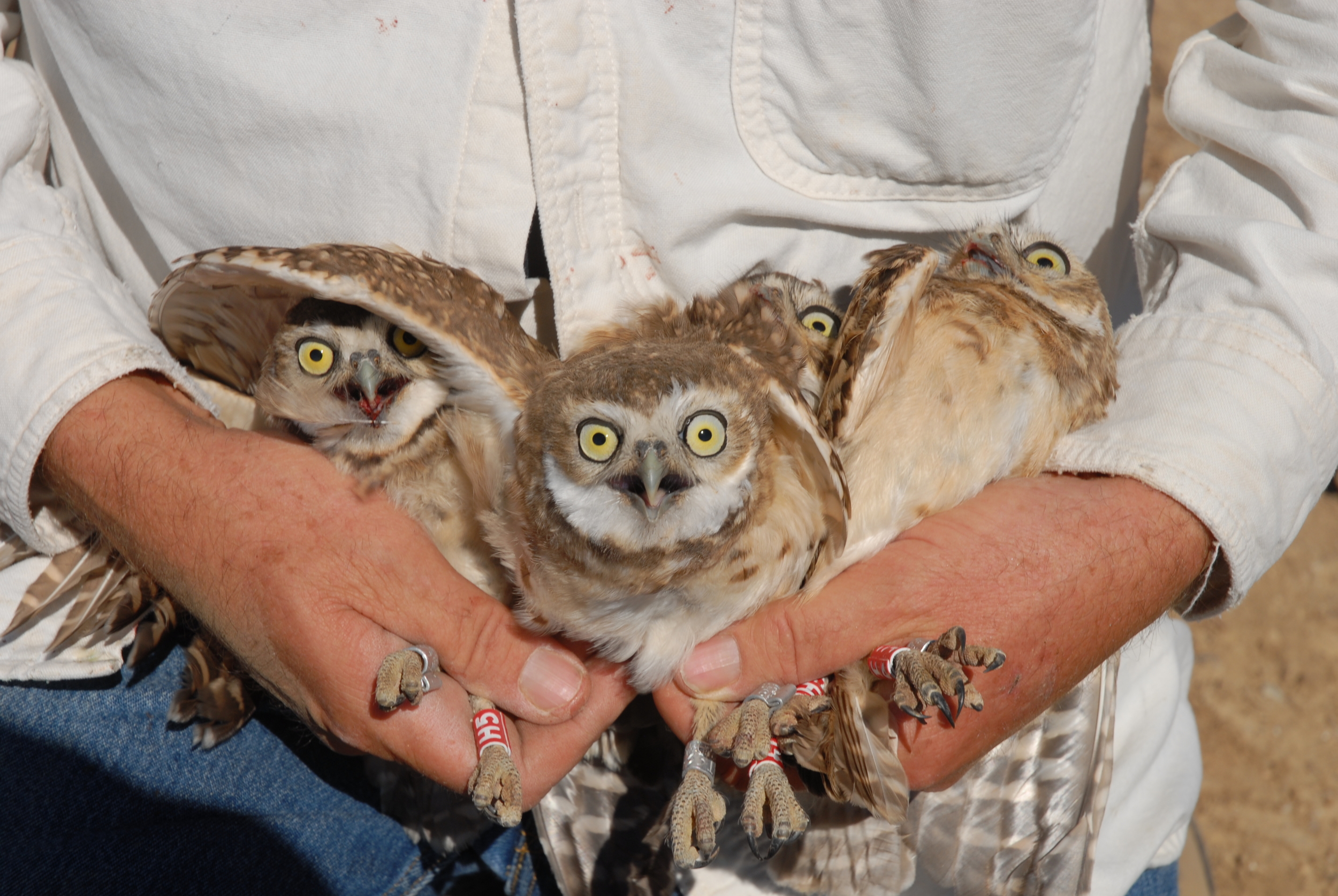
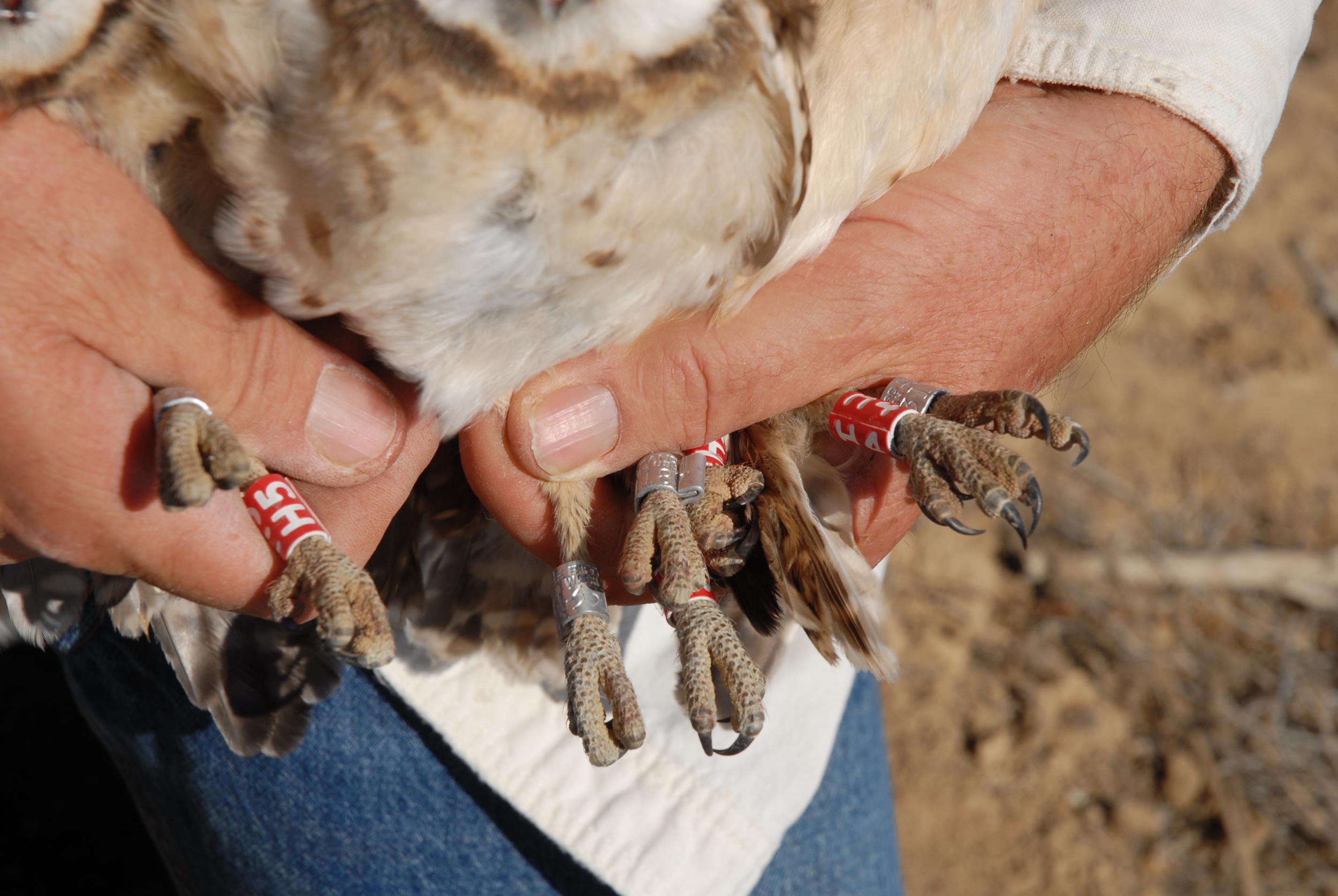
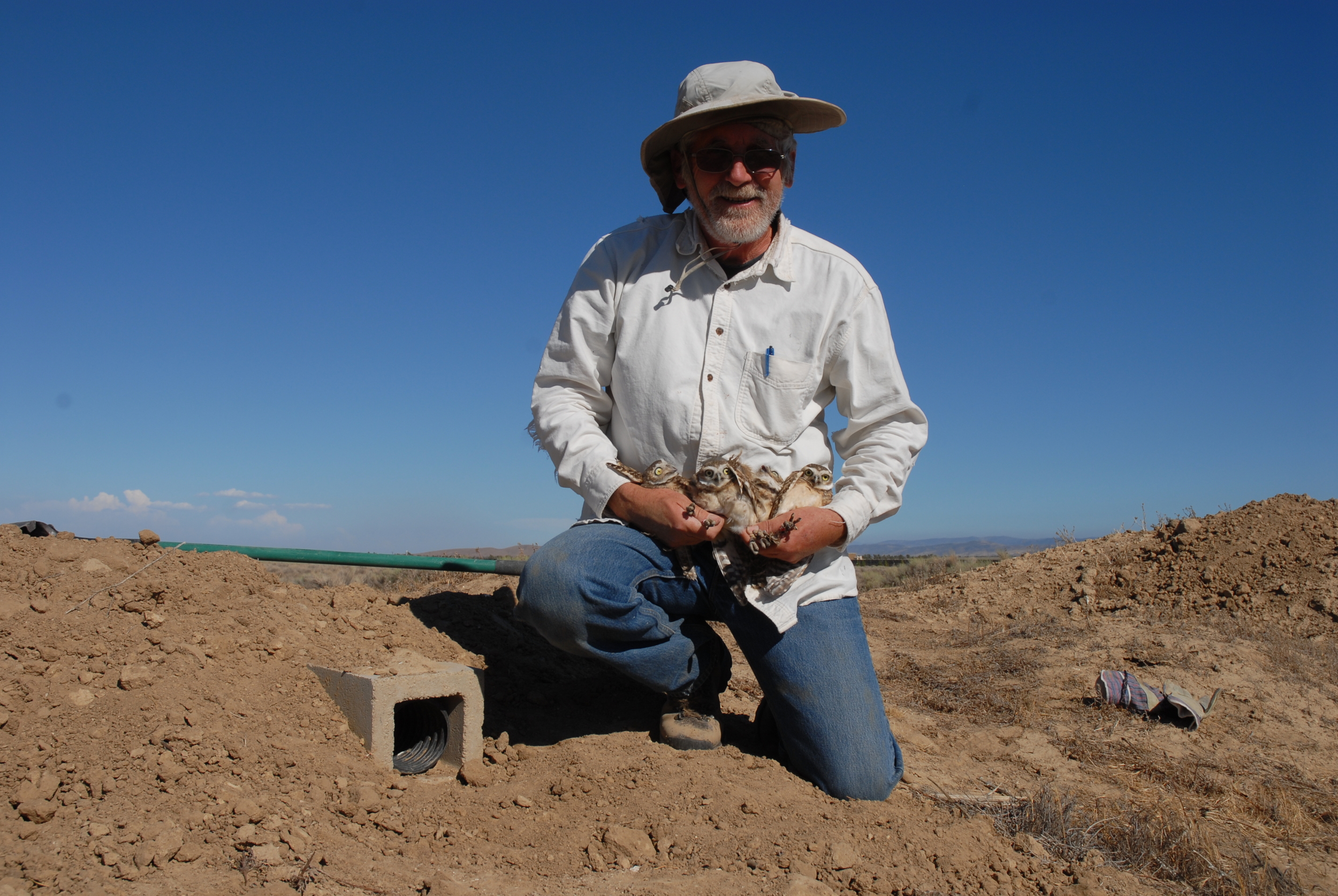
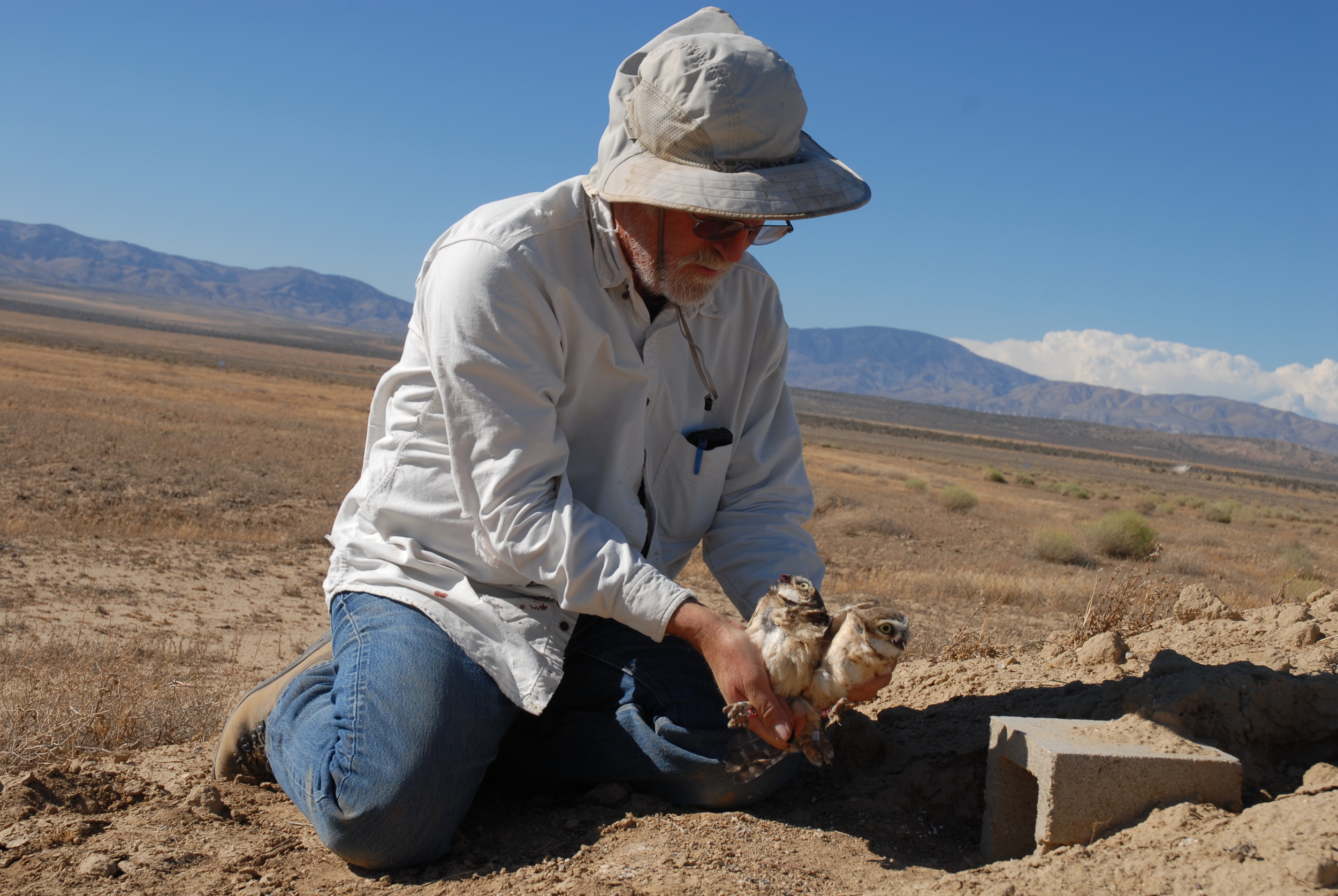
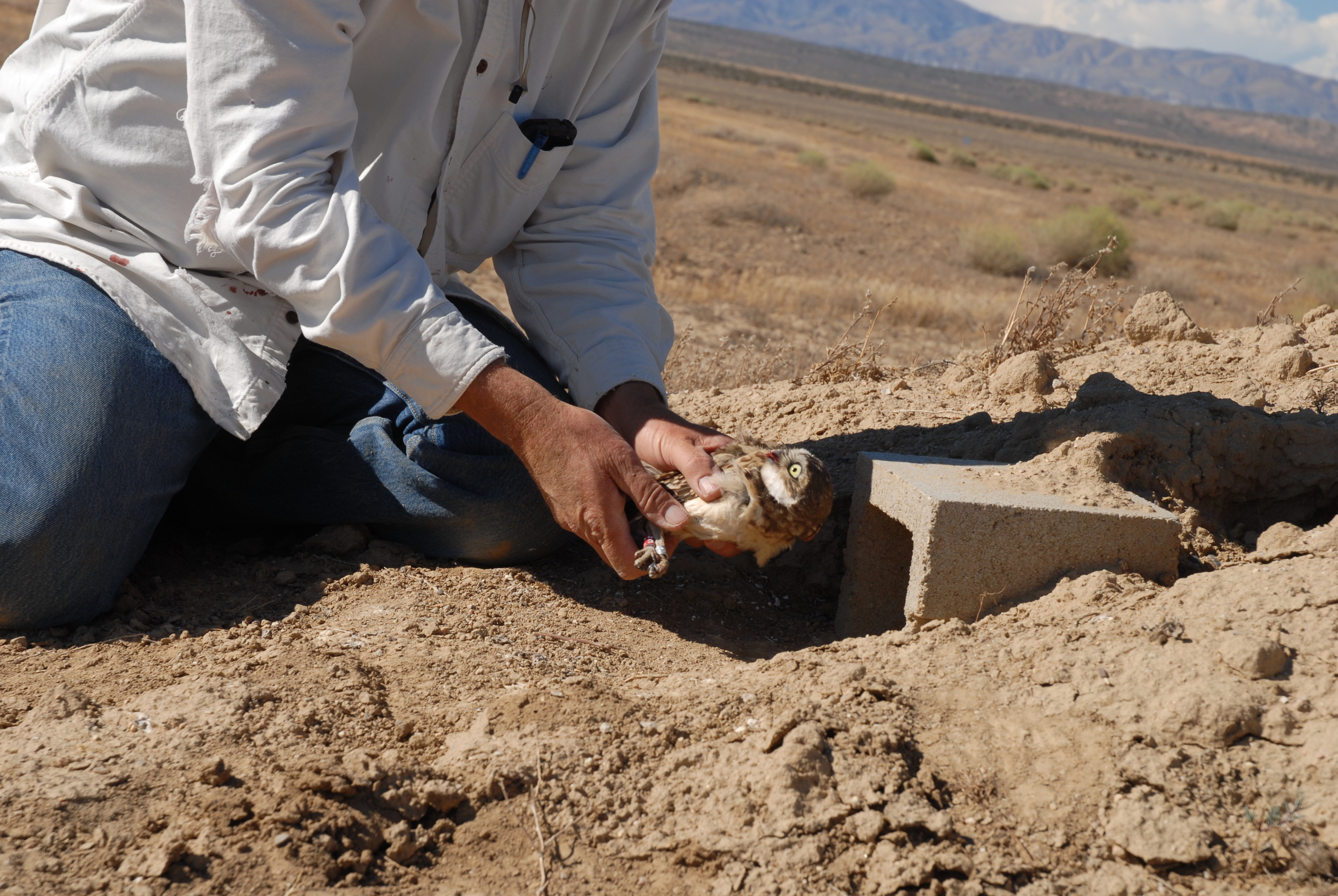
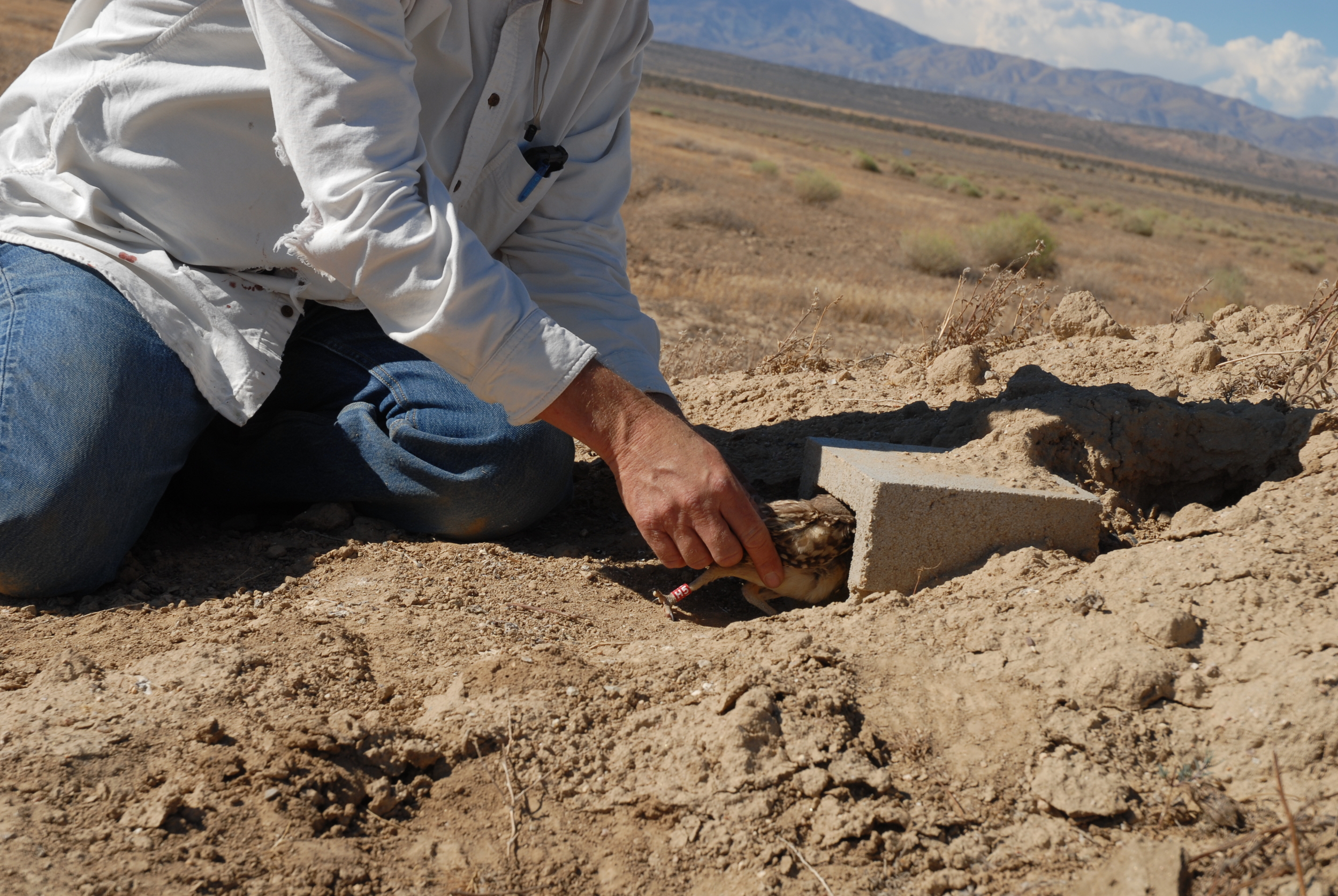
Peter Bloom - Sierra Club, Thursday May 14 - Culver City
Peter Bloom, Ph.D. will be speaking this Thursday to the Culver City Sierra Club, about his dissertation research into the migration habits of red tailed and red shouldered hawks in Southern California. For over 40 years Peter has been studying the raptors of southern California, he will present a talk about migration, natal dispersal patterns, origin and survival.
Debbie Drezner will be introducing the talk and we hope to see you there.
May 14, 2015
Veteran's Memorial Building
4117 Overland Ave.
Culver City Ca, 90230
7pm
Chapter two of Peter's dissertation as newly published in the March 2015 issue of the Journal of Raptor Research! Northward Summer Migration of Red-Tailed Hawks Fledged from Southern Latitudes.
Chapter one of Dr. Bloom's dissertation published in 2011, Vagrant Western Red-shouldered Hawks: Origins, Natal Dispersal Patterns, and Survival. The Condor 113: 538-546
